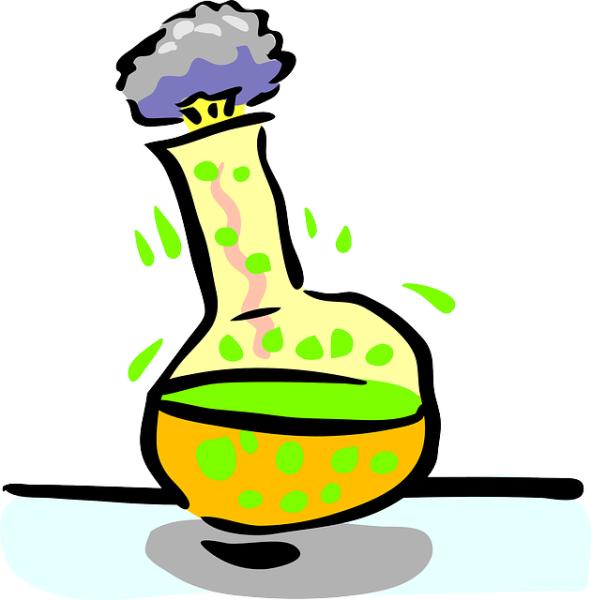
The New York Times, specifically pundit Nicholas Kristof, has once again demonstrated their flair for hyperbole at the price of scientific honesty. In his current column, What Poisons are In Your Body, Kristoff recounts his concern about chemicals in his environment and the recent testing of his urine for chemicals [1].
Kristof has drunk deeply from the organic, pesticide-free, endocrine disruptor-free Kool-Aid of chemical fear. In his own words,
“So I’ve tried for years now to limit my exposure to endocrine-disrupting chemicals. Following the advice of the President’s Cancer Panel, I eat organic to reduce exposure to endocrine disruptors in pesticides. I try to store leftover meals in glass containers, not plastic. I avoid handling A.T.M. and gas station receipts. I try to avoid flame-retardant furniture.”
To evaluate his current exposure he utilized the “Detox Me Action Kit” which tests your urine for chemical metabolites. In his first, but not last moment of playing fast and loose with the truth he describes the urine test, which costs $300, as a way for consumers to learn “what harmful substances are in their body.” The Silent Spring Institute [2], the maker of the urine test kit is a bit more circumspect in their claims. First, the “Detox Me Action Kit” is
“..part of a scientific study run by Silent Spring Institute, a 501(c)(3) non-profit organization. We’re crowdfunding this study to get a better sense of our collective exposure to harmful environmental chemicals.”
More telling is the real disclaimer,
“These 10 chemicals [the ones tested for in the urine] have been detected at different levels in people throughout the U.S., but detecting these chemicals in your urine doesn’t mean you will get sick. It is not known if exposure levels in the general population are above or below levels that cause health effects.”
So I think we can all agree that the term "poison" is carefully chosen, both disingenuous and inflammatory, more suitable for clickbait than evidenced-based debate. Consider the four chemicals detected at high levels in his urine; 1,4-dichlorobenzene, bisphenol A, flame retardants, and antimicrobials. To be fair, he admits not knowing their effects – perhaps the only example of truth in the entire article.
The FDA reports that 1,4-dichlorobenzene (one of the chemicals used as mothballs) results from “breathing contaminated indoor air.” The agency goes on to report that there are no human studies demonstrating carcinogenicity and that there are no animal studies involving breathing this chemical demonstrating carcinogenicity. There are reports of individuals who eat mothballs or urinal cakes daily or weekly becoming ill. It would seem to me that someone who eats a urinal cake has more problems than an upset stomach.
Bisphenol A has long been a suspected (but never proven) to be a bad actor. But it's not, according to the FDA - something we just reported.
The greatest source of flame retardants, according to the American Chemical Society, is household dust. I spent a few moments researching triphenyl phosphate and its neurotoxicity. It can be found in this study – a study cited by Kristof’s go to source the Environmental Work Group. Leave aside the testing was on embryonic zebrafish, and that the researchers indicated that there was no way to determine the relationship between the doses they administered to the fish embryo to any comparable human exposure. Triphenyl phosphate by the researcher’s own results had no impact on the adult fish. So flaws in Kristof's column cannot be because the Triphenyl phosphate “made me do it.” We should also remember that flame retardants are chemicals that we, as a society have required manufacturers to add to products to protect us from fire risks.
Finally, antimicrobials in your urine could come from one of two sources, a medical prescription you sought and were given; or from various lotions; you have chosen to anoint yourself with to guard against bacterial invaders.
Of course, the enemy here is once again the manufacturers whose lobbying got them “the lightest regulations money can buy.” Kristof quotes Dr. Richard Jackson of UCLA, “So much of what we are exposed to is poorly tested and even less regulated.” He should know, he had nine years as the CDC’s National Center for Environmental Health in Atlanta to make a difference.
"The core purpose of The New York Times is to enhance society by creating, collecting and distributing high-quality news and information." [3] The column by Mr. Kristof fails his employer's purpose and fails his readers by evoking fear rather than sharing facts.
[1] This is far from the first time that Kristof has been talking out of the wrong orifice. Back in 2012, my colleague Josh Bloom wrote a rather acerbic article for Medical Progress Today entitled "Why I Don't Write About Pottery From the Ming Dynasty," which poked fun at Kristof's absurd fear of BPA.
[2] The groups also produced the smartphone app Mr. Kristof describes in the article.
[3] Standards and Ethics, New York Times



